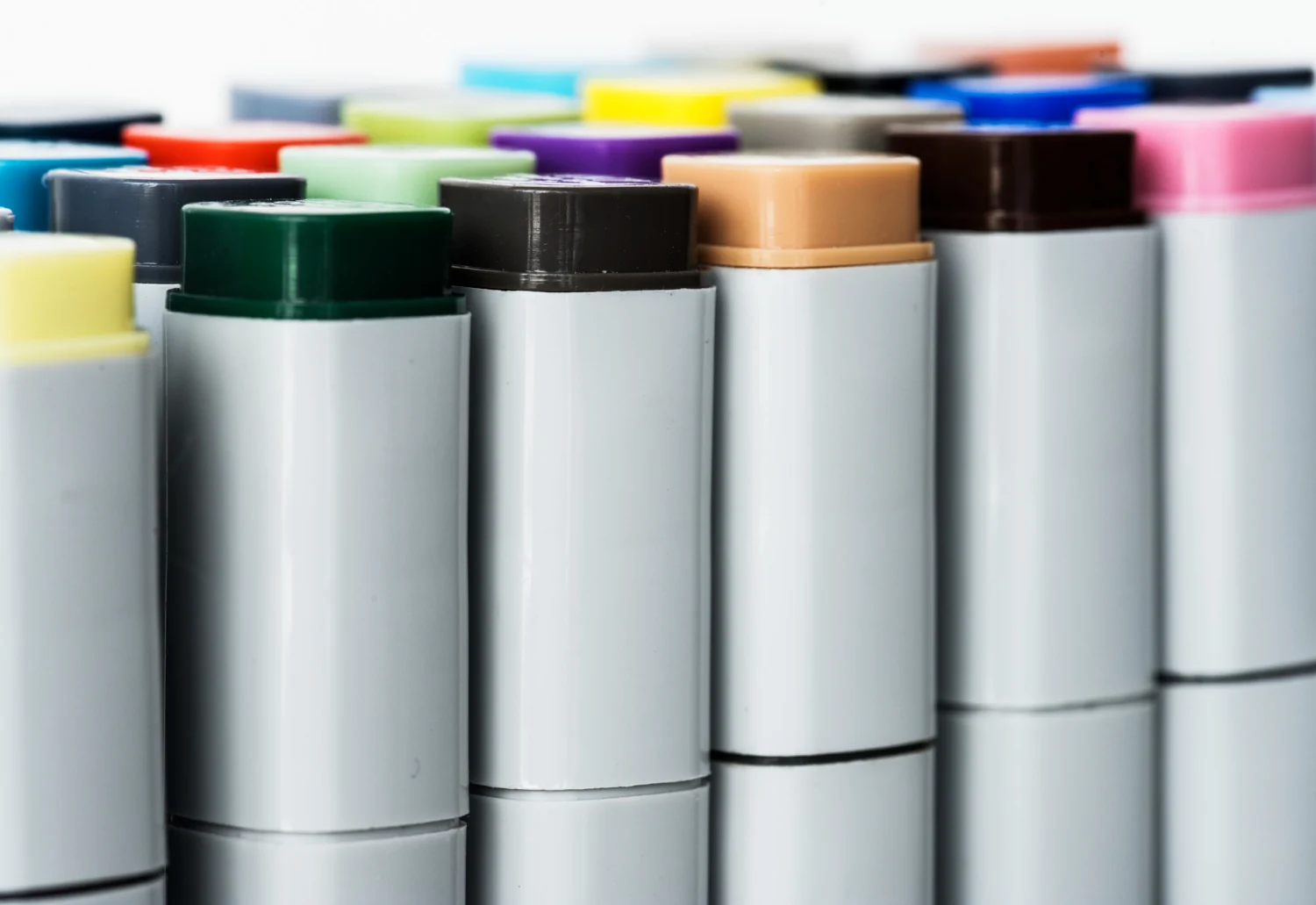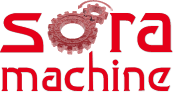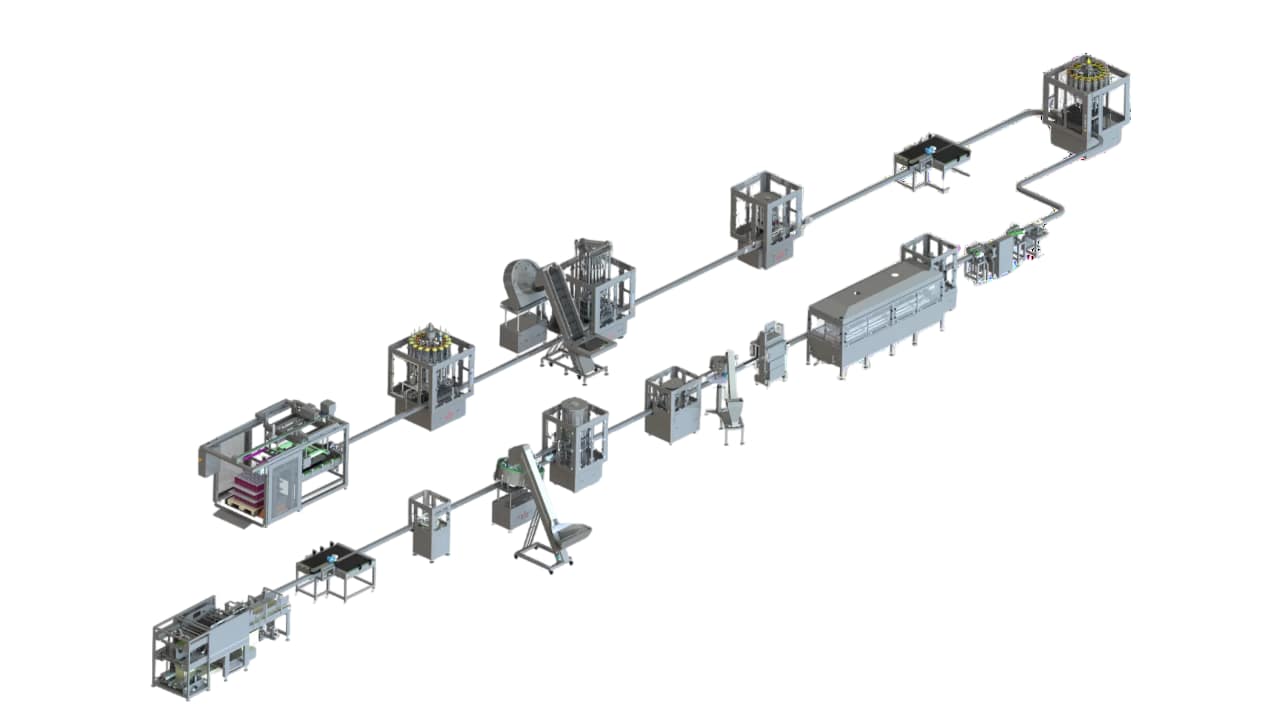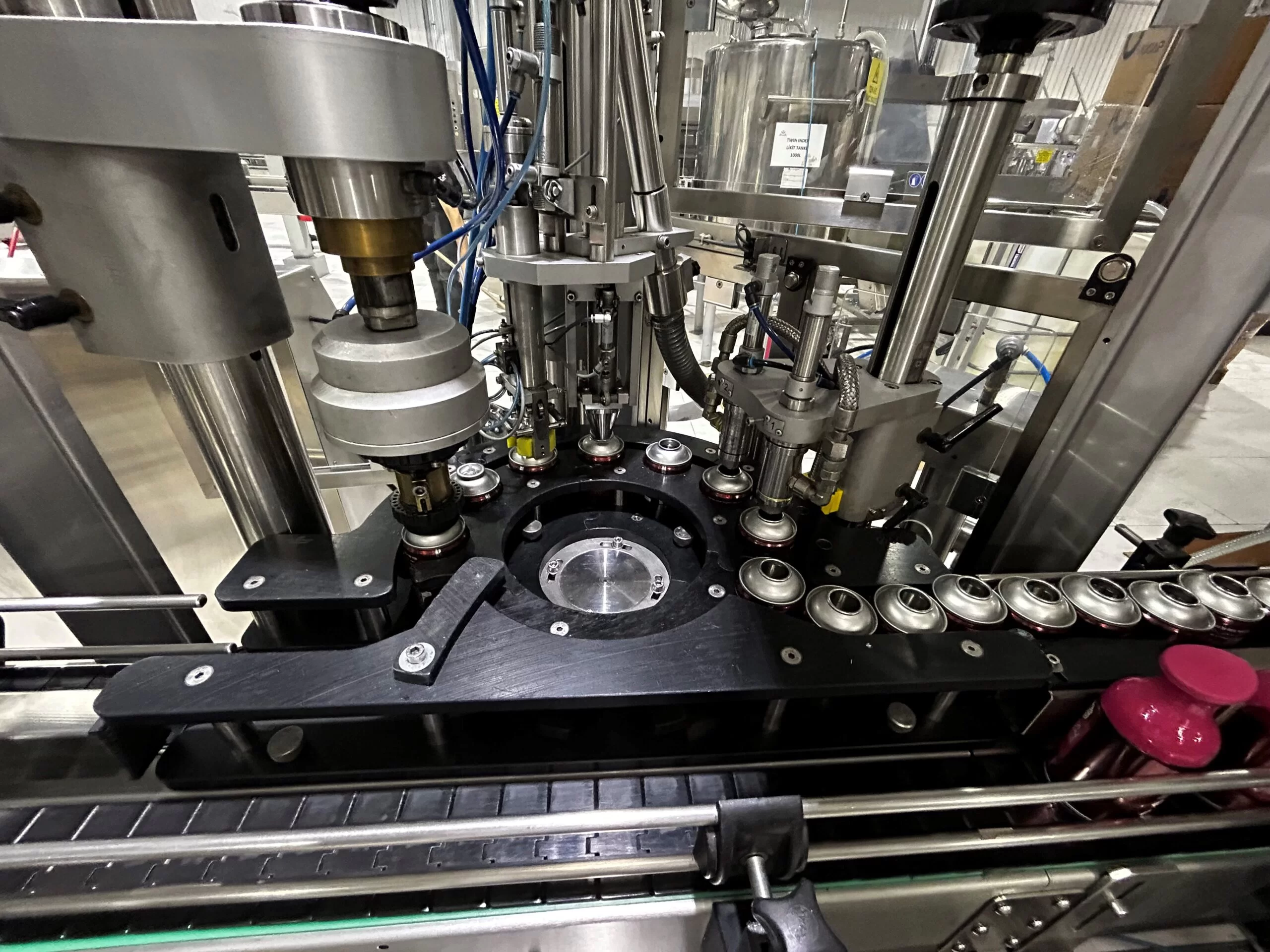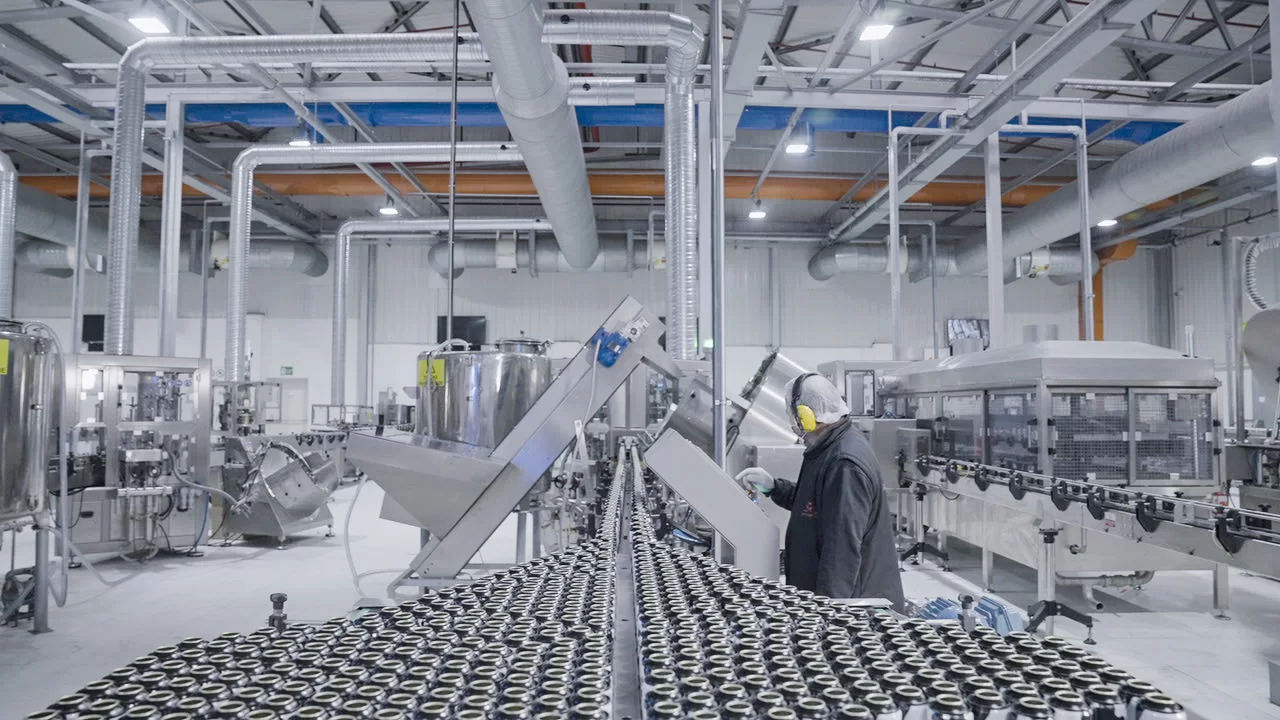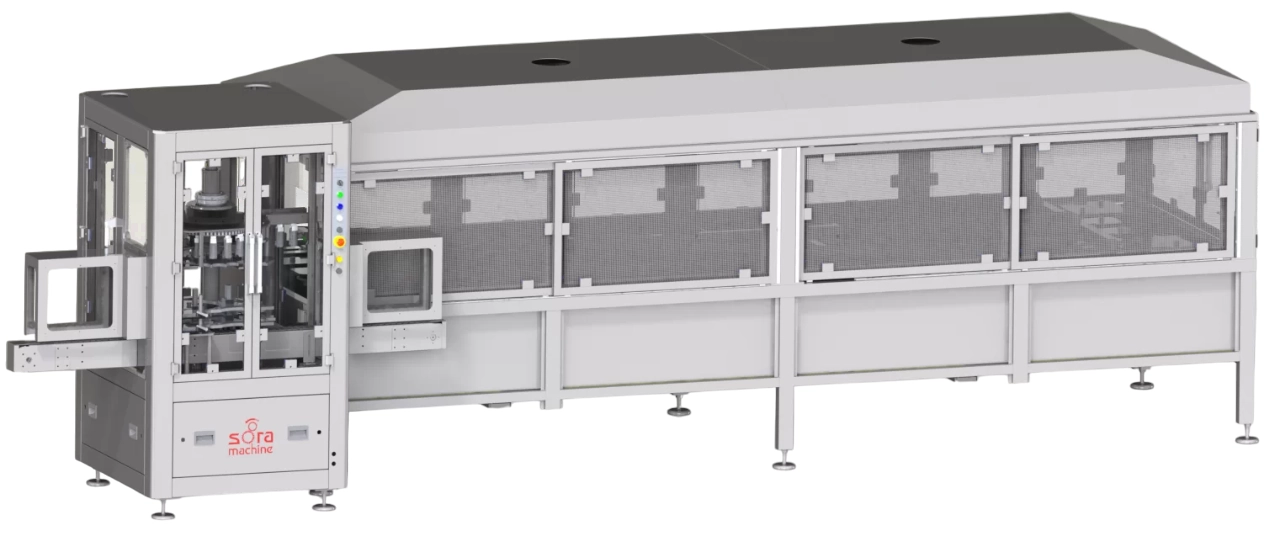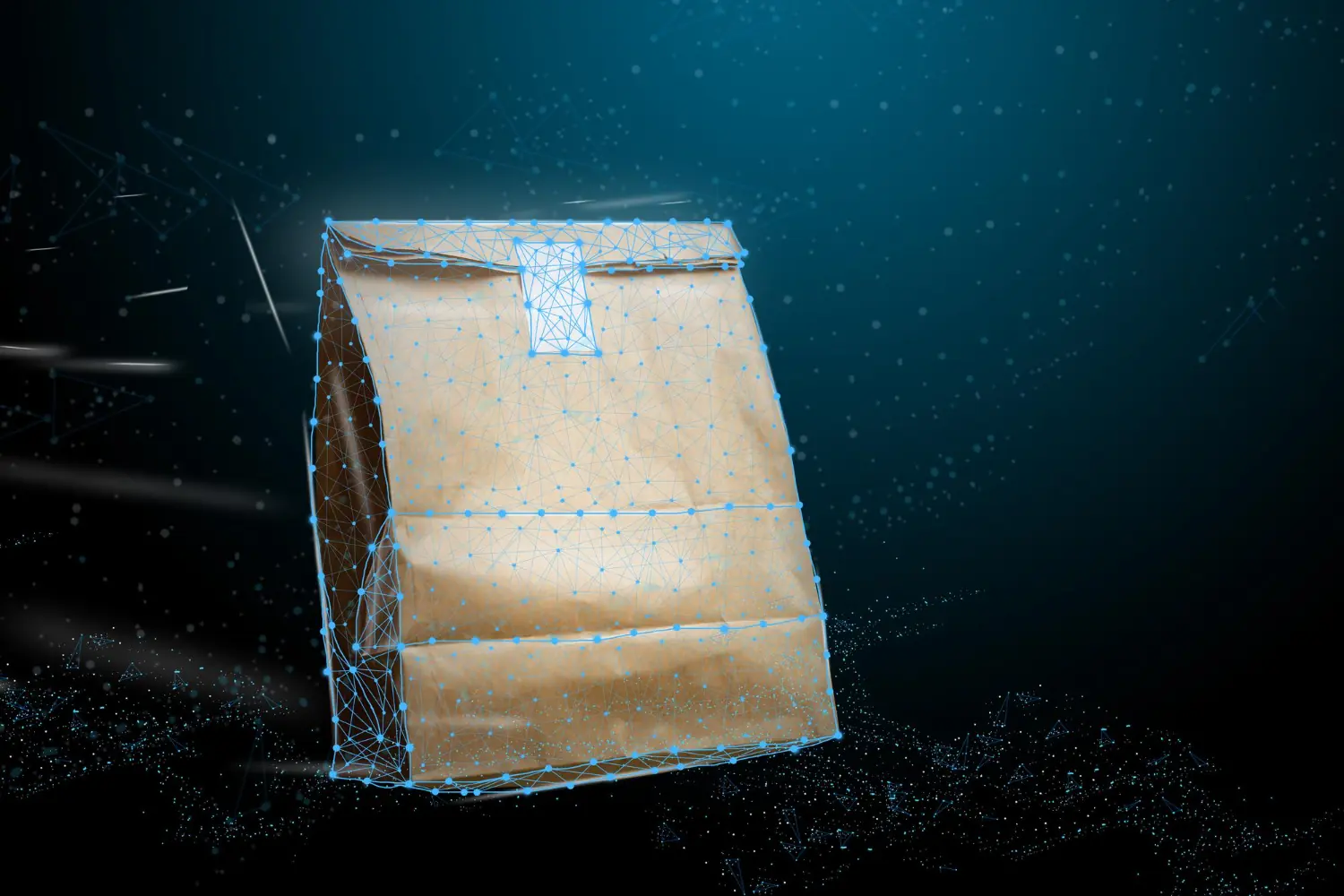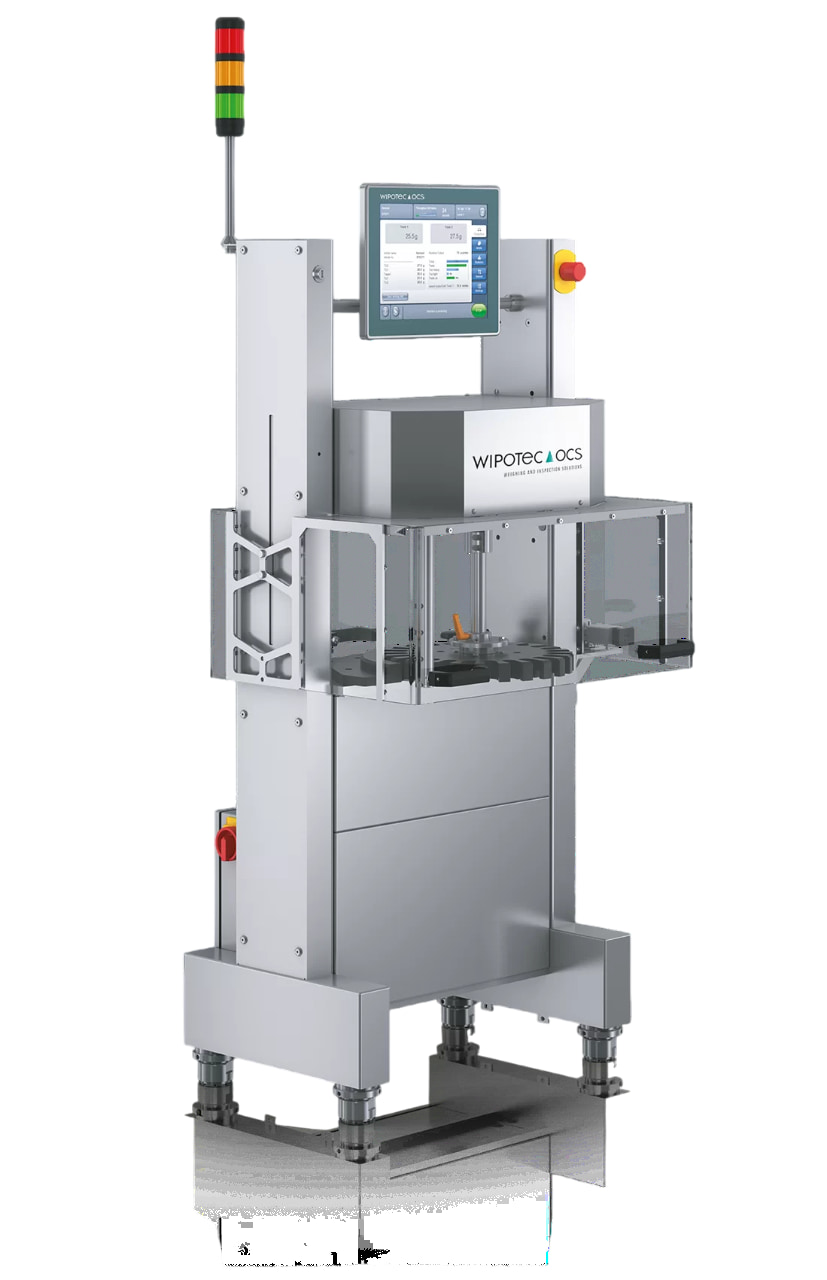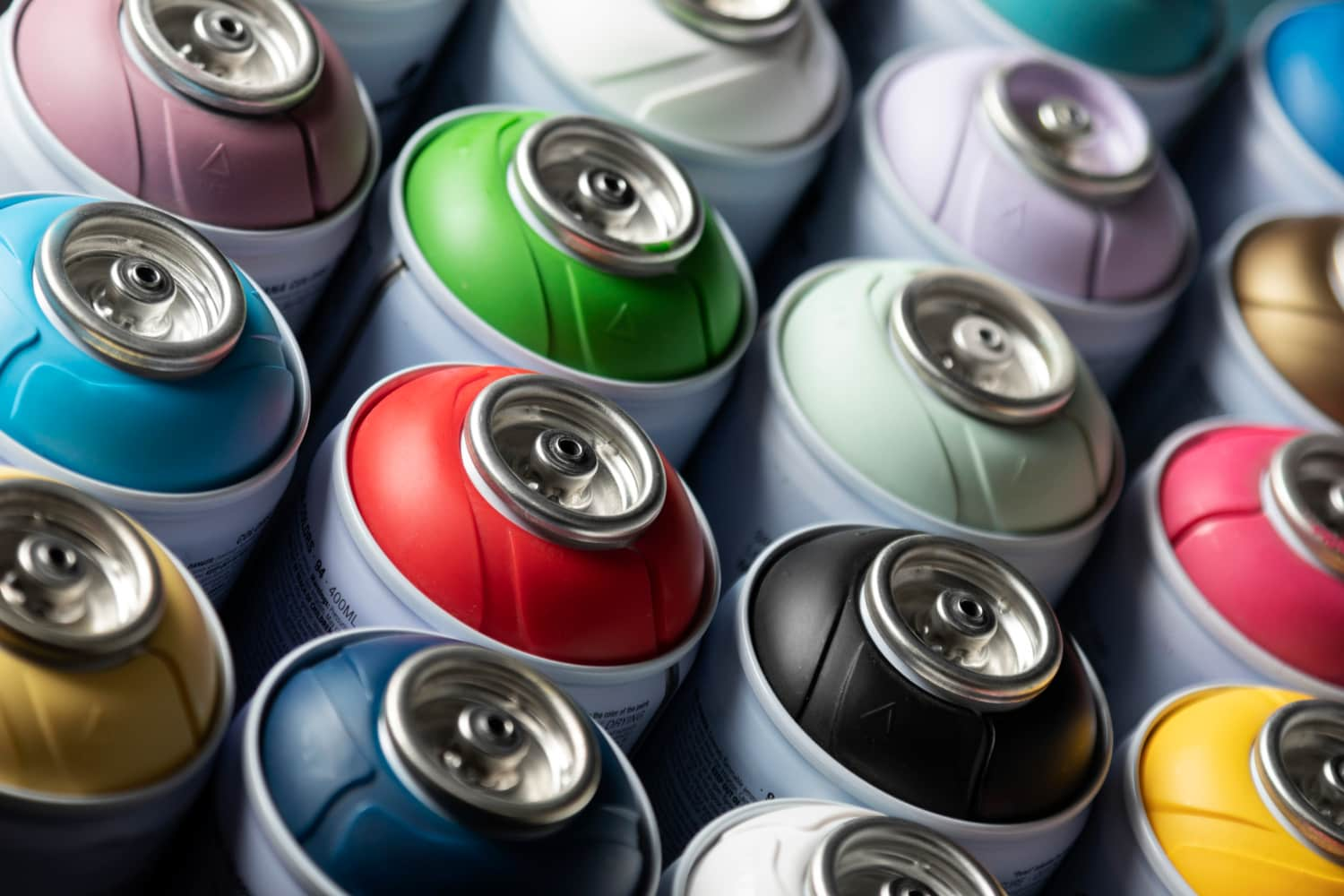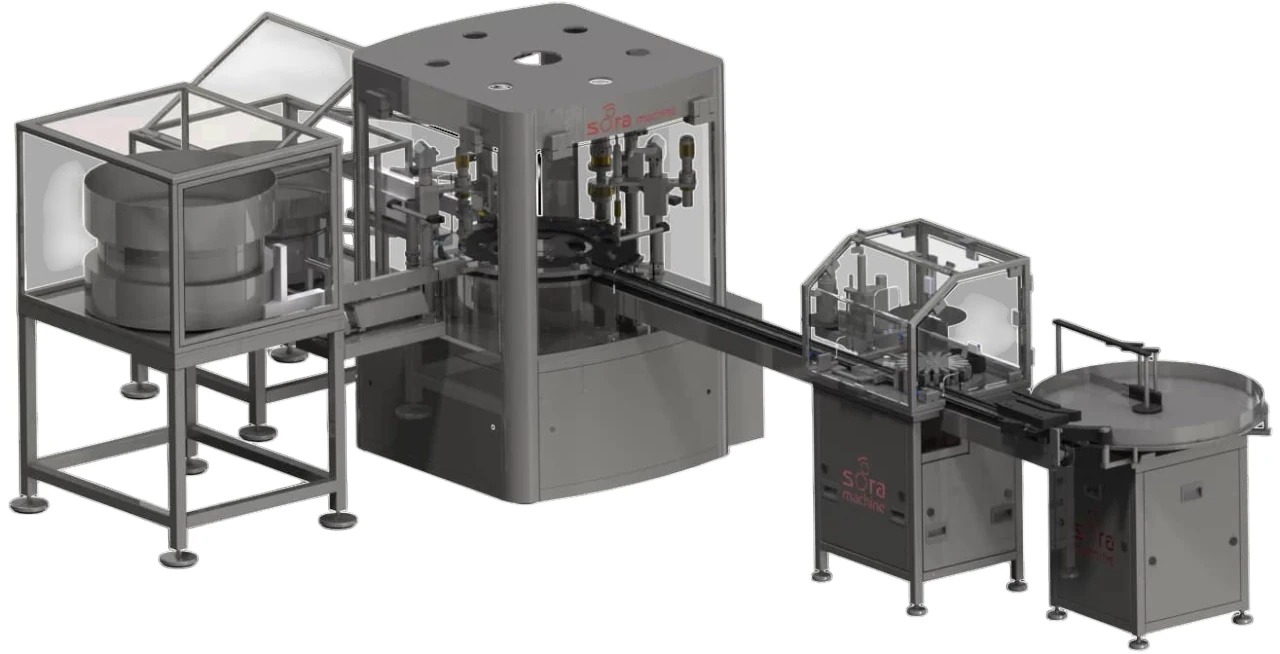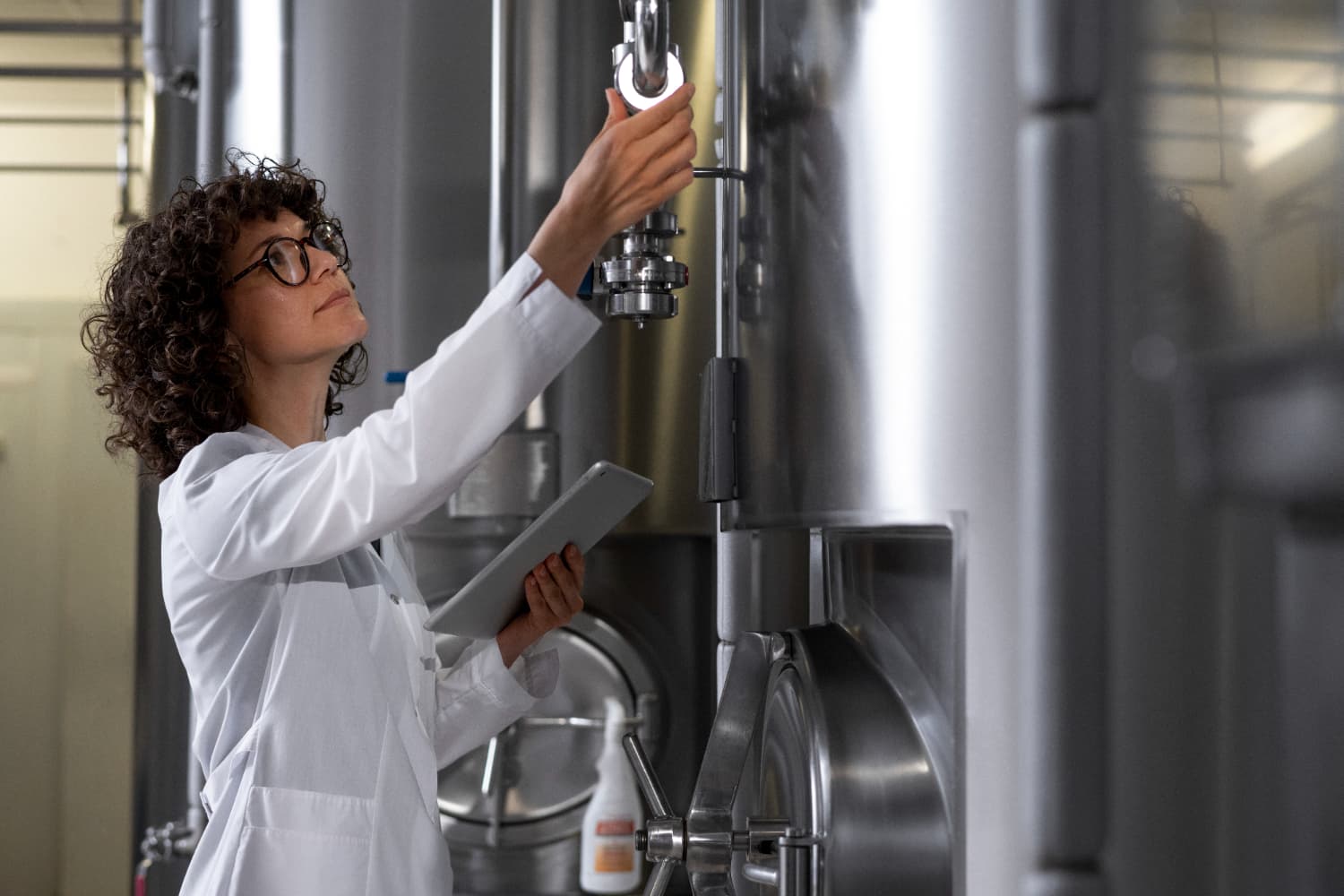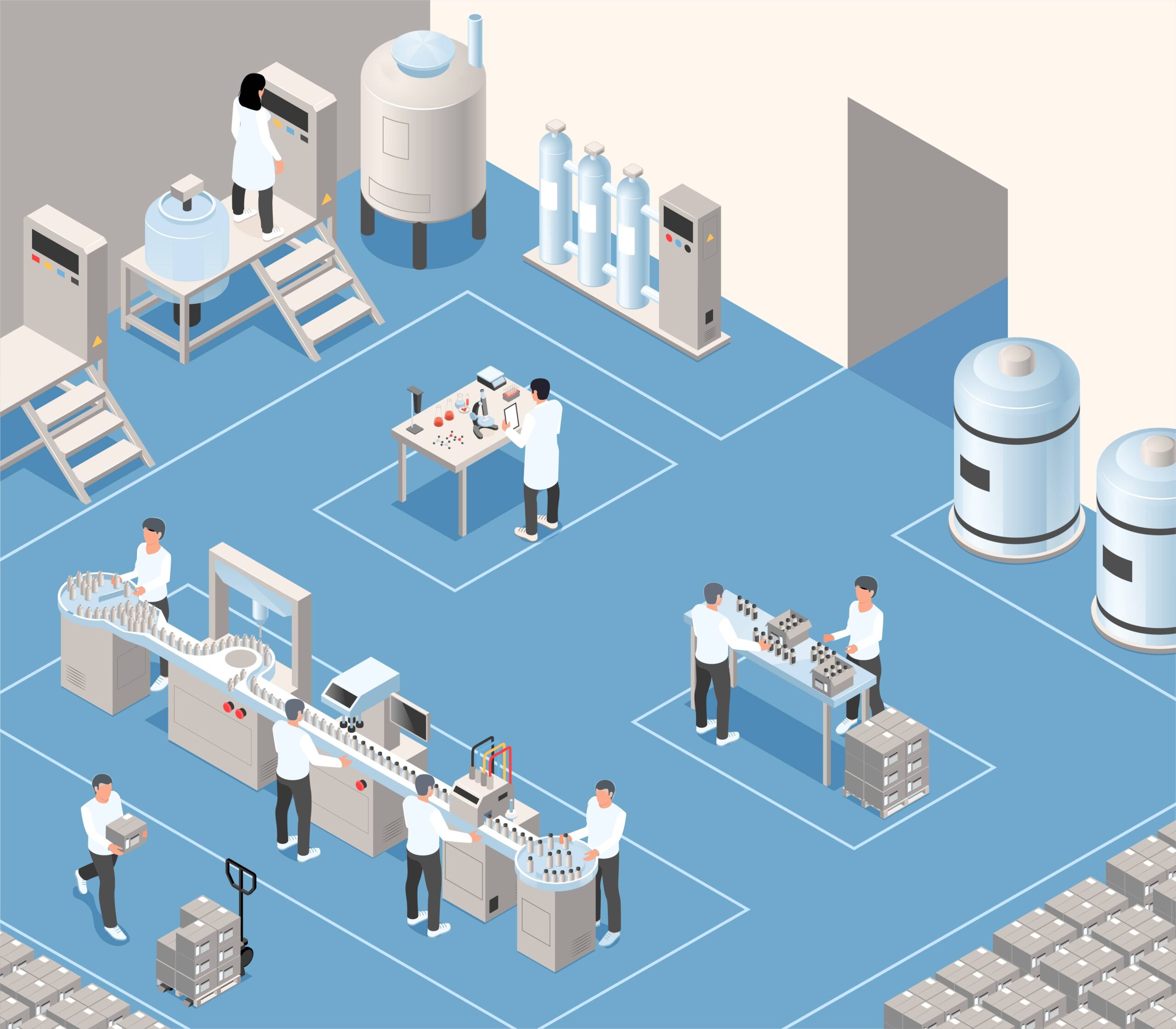Most basic concepts and processes related to an aerosol packaging line can be divided as feeding of empty aerosol cans to the system, filling the product, quality control of fillers and other equipments and final packaging, for example cartoning. These steps can be further automized with robotic applications such as quality controlling robots or palletizing robots. Improvements can be endless in this field and most important and effective ones are usually ones that automizes an entire step.
A typical aerosol packaging line begins with the feeding of empty cans, which are then cleaned, positioned, and directed through various filling stages. The process continues with the addition of valves, crimping, gassing (often with propellants), and capping before labeling and cartoning occur. Each stage must be synchronized and aligned with precision.
As automation becomes more accessible, robots now take part in every one of these phases, including highly sensitive tasks like leak detection and valve alignment. Integrating robotics into these processes not only eliminates repetitive strain for workers but also significantly boosts production consistency.
Moreover, smart robotics can handle variation in can sizes and products more effectively than traditional mechanical systems. When a robotic arm replaces a manual or semi-automatic phase, we not only reduce labor costs but also eliminate one potential point of failure or error. This is especially important in aerosol lines where small inconsistencies can lead to safety risks or product waste.
Technologies and Systems That Increase Efficiency in Production
Systems efficiency can be increased via different methods such as robotic solutions or improve ergonomics for operational personel. Data tracking and data monitoring methods can be applied to further analyze and understand the filling lines efficiency and bottle necks. As an example if the last machine is working at ten products every minute, it means that the entire line has the speed of ten products. Further explaining, a chain is stronger as its weakest link.
This analogy is incredibly powerful when evaluating line efficiency. It doesn’t matter how fast the initial stages of production work—if the last machine is slower, everything backs up. That’s why a holistic review of the entire packaging line, from material feeding to end-of-line packaging, is crucial.
To increase efficiency in production, we must ensure our machine parcour equipments to have similar speeds corresponding with each other. Further ways to improve efficiency is to reduce downtime between product changes, this is called SMED excersize which can be applied to the line to further increase efficiency.
SMED (Single-Minute Exchange of Dies) is a lean production technique that reduces the time needed to switch from one product to another. In aerosol production, this could mean changing filling heads or adjusting conveyor guides for different can diameters. When implemented correctly, SMED significantly reduces downtime and boosts throughput without additional investment in machinery.
Efficiency is also about how we treat operators. Improving ergonomic designs and ensuring intuitive interfaces for machines help reduce fatigue, errors, and ultimately improve production reliability. Even things like foot traffic routes inside the plant or the layout of spare parts can make measurable differences in efficiency over time.
Increasing Speed and Precision with Automation and Robotic Solutions
Since robots work with sub-milimeter accuracy, placing of packaging material or feeding any component to the line becomes almost %100 accurate. Altough there is no presicion needed for most aerosol product filling stages, robots provide it along with efficiency.
Even when precision isn’t mission-critical, robotic systems eliminate inconsistency. Repeatability is where robots truly shine—they can complete thousands of repetitive motions a day with no variation. Whether it’s picking up valve caps, placing shrink-wrap, or arranging boxes on a pallet, a robot performs every task with identical force, speed, and path.
One of our previous projects with one robotic system we increased the OEE drastically due to heavy nature of the product. Since robots are tireless creatures they have no problem moving heavy cartons of products all day to various heights.
This type of improvement is not just theoretical—it translates into tangible business results. OEE (Overall Equipment Effectiveness) is one of the most crucial metrics for production environments, and robotic palletizing or case handling can significantly improve this by reducing downtime, speeding up movements, and eliminating manual labor breaks.
This operation is not for humans to do, rather humans to observe and supervise thesedays. Unfortunately sometimes our solutions still require a human presence, but most cases we reduce the human labor in processes entirely. This grants increased speed and presicion of planning when it comes to manufacturing aerosol.
Moreover, with fewer people directly interacting with the machines, the risks of human error or injury also decrease. As a result, maintenance becomes more predictable and strategic planning for workforce allocation becomes easier and more efficient.
Quality Control and Error Reduction Strategies in Production
Most basic automation system which controls the filling weights for products is actually a very effective method. With this approach you can detect any faulty cans and achieve error reduction. The device type for this is named checkweigher. Which are programmable automatic weight checking device.
A checkweigher does more than just measure. It verifies that each filled aerosol can falls within a specific weight tolerance. Underfilled cans may not deliver full product to the customer, and overfilled cans can pose safety risks. This small step in the process ensures product consistency, customer satisfaction, and regulatory compliance.
One of its smart feature is it counts faulty products and if programmed number of fault products happen to be detected back to back, it stops the filling process and requires human interferance. With this approach you minimize the fault product to be produced all day with out notice.
That kind of smart automation safeguards against costly mass defects. Imagine running for 6 hours only to realize your filler was off by 10 grams. Not only do you lose the material, but you also risk product recalls or customer complaints. A simple auto-stop feature in response to a series of defects prevents this.
Even if its noticed, it may be a lot of them, with this approach you can have only conveyor long faulty product which is for sure usefull.
Over time, this type of micro-adjustment-based quality control leads to less waste, better reputation, and more predictive maintenance needs across the line. Essentially, your system begins to self-correct, keeping human input to a minimum while maintaining high quality output.
How to Optimize Processes with Integrated Data Monitoring Systems?
Firstly machine shoul be responsive corresponding to the machine. In case of a system malfunction machine should stop and require human interference. With this method error can be reduced and we can achieve increased efficiency of our aerosol packaging filling hall.
The foundation of a truly smart factory is connectivity. Machines should be networked together with centralized data collection systems, allowing operators to track performance, errors, and trends in real-time. For example, downtime reasons can be categorized, visualized, and tackled systematically.
As an example our mixing vessels may be smart to show good amount of data or same for our Warehouse. The entire process consists of many different steps and Warehouse is the most fundamental one since it both hosts finished and raw materials. Data monitoring and planning is especially effective in Warehouse systems.
In modern aerosol packaging facilities, the warehouse is not just storage—it’s a strategic hub. When warehouse operations are digitized with tools like RFID, inventory tracking, and forecast-based planning, material flow becomes smoother, production delays decrease, and fulfillment gets faster.
Monitoring software can send alerts for low stock levels, suggest optimal reorder times, and even track batch-level traceability. Combined with MES (Manufacturing Execution Systems), your aerosol production line becomes transparent from input to output.
